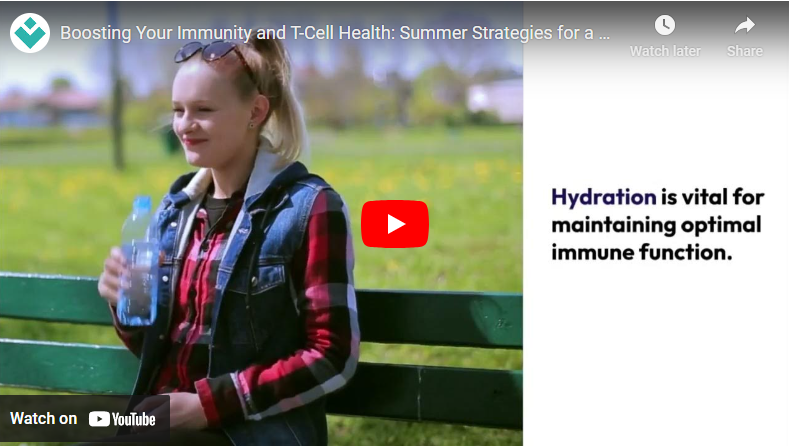ELISA vs ELISpot: Select The Right Assay For Your Research

Immunoassays – such as ELISA and ELISpot – are indispensable tools for immunology research. They work based on principles of antibody-epitope interaction, providing critical insights into the inter- and intracellular signalling pathways that drive biological processes. They hold applications in investigating: the immune response to pathogens, the progression of autoimmune disease, the efficacy of vaccines, and organ post-transplant success. Of this assay type, the Enzyme-Linked Immunosorbent Assay or “ELISA” is perhaps the most well-known. It is widely used in routine laboratory settings, including biosafety level 2 (BSL-2) environments, and is a go-to method for detecting and quantifying protein-based analytes such as cytokines, antibodies, and antigens. Yet, despite its widespread application and versatile utility, the ELISA assay is not a ‘one-size-fits-all’ solution, especially in immunology research. Immunology is a complex, nuanced field in which rare events and intricate cell maturation patterns necessitate highly sensitive and specific research methods. In the right application setting, ELISpot can offer greater resolution and more scientifically valid results. This article highlights some of the key similarities and differences between ELISpot vs ELISA assays. It also aims to equip researchers with the knowledge required to confidently select the most appropriate assay for their immunology application. What is an ELISA assay? ELISA is a plate-based assay system designed for the detection and quantification of specific antigens or antibodies within a liquid sample. They rely upon the enzyme-linked detection methods – typically mediated by reporter enzymes – to generate a quantifiable signal (typically colorimetric, but sometimes chemiluminescent or fluorescent) proportional to the abundance of a target analyte. There are several types of ELISA assay kits, each offering benefits depending on their application. These include direct, indirect, sandwich and competitive methods. In most ELISA methods, a specific antigen or capture antibody is first immobilized on the plastic surface of a microplate well. Liquid sample containing the target analyte is then added before the plate is incubated (temperature and duration variable), allowing the target time to bind to the immobilized component. When the incubation time is up, any unbound target is washed away using a non-reactive buffer, such as PBS, TBS or Tween-20. A detection antibody is then introduced. Primary detection antibodies are either directly conjugated to a reporter enzyme or bound to the reporter by an enzyme-linked secondary. The reporter produces a quantifiable signal that can be analyzed by a microplate reader when a specific substrate (such as alkaline phosphatase) is added. The intensity of this signal is directly proportional to the concentration of the target analyte in the liquid sample. What is an ELISpot assay? ELISpot assays are another example of an enzyme-linked immunoassay. Unlike traditional ELISAs, ELISpot assays are precisely designed to detect and quantify the number of individual cells secreting a target protein. While they share many similarities with the ELISA method, it’s important to remember that ELISpot protocols and applications are distinct. Performed in 96-well or 8-well strip microplates with specialized membranes, ELISpot assay kits utilize a sensitive sandwich-based detection approach to achieve target detection. Many suppliers offer both pre-coated and non-coated microplate options to allow researchers flexibility in their experimental design. During an ELISpot assay, a known number of viable cells are added to each microplate well containing a membrane pre-coated with capture antibodies. The plate is then incubated (typically for 1-2 days), during which the cells secrete the target analyte. These secreted molecules are immediately captured by the antibodies immobilized directly beneath each cell, resulting in localized analyte deposition. After the incubation period, the cells are carefully washed away, leaving only the secreted bound analyte. Detection antibodies are then added to form a sandwich complex with the captured protein, followed by an enzyme-linked reporter and a chromogenic substrate (such as horseradish peroxidase or alkaline phosphatase). The enzymatic reaction generates visible coloured spots, each representing a single analyte-secreting cell. These can be quantified using microscopes or specialized ELISpot readers. ELISA vs ELISpot At first glance, ELISpot and ELISA assay kits appear remarkably similar – both harness sophisticated antibody-based reporting and rely on the immobilization of reagents within microplate wells. However, while they share the same core molecular principles, ELISpot and ELISA assay kits are engineered to interrogate fundamentally different aspects of immune biology. While ELISA assays are designed to quantify the total concentration of an analyte present in a liquid sample—like serum, plasma, or cell culture supernatant—ELISpot offers a distinct advantage when it comes to profiling immune function. It allows researchers to analyze and quantify the distinct number of individual cells actively secreting a target molecule, providing detailed insights into T cell behaviour and cytokine expression. To further highlight the differences between ELISpot and ELISA assays, the key characteristics of both are summarized in the table below. Key differences between ELISA vs ELISpot assays Feature ELISA ELISpot Analyte Detection Total concentration within a liquid sample Number of individual, analyte-secreting cells Sensitivity Less sensitive More sensitive Resolution Not single-cell level Single-cell level Table 1: A summary of the key differences between ELISA and ELISpot assay methods. When to choose an ELISpot assay? Choosing an ELISpot assay is a great first move towards innovation in your immunology workflow. Their single-cell resolution, sensitivity to rare cell sensitivity and constant ongoing technological evolution allow them to meet the high standards of modern immunology research, while building on the familiar principles of ELISA-based workflows. ELISpot assay kits are the perfect choice for researchers looking to identify disease states at early stages, detect low-abundance pathogen stimulation or explore low-level inflammatory states. They can be used together, alongside ELISA and flow cytometry methods, to offer an additional perspective on immune cell function.1 In summary, choose an ELISpot assay when: ELISpot in the real world: diverse immunology applications ELISpot has been used extensively in vaccine efficacy testing for many years.23 In fact, they are instrumental in quantifying T cell responses post-vaccination, informing novel prophylactic development and re-dosing strategies. By providing insights into T cell-mediated immune responses, ELISpot enable scientists and clinicians to accurately evaluate vaccine success, monitor long-term immunity, and make informed
Virax Biolabs Appoints Iain Miller, PhD as Independent Director to Accelerate Commercial Strategy.

Diagnosing Long COVID: A Gut-Immune Perspective.

Diagnosing chronic, post-acute inflammatory conditions – like Long COVID – remains a persistent challenge for researchers and healthcare professionals alike. The variable presentation of symptoms – along with the allusivity of an exact cause – make these conditions difficult to pin down in the clinic. Current diagnostic approaches rely on highly speculative patient questionnaires; these, while useful, do not provide researchers or clinicians with accurate measures of symptomology – nor do they provide quantitative data to stratify disease severity or explore potential disease subtypes. The urgent need for accurate, improved diagnostics has led researchers to explore a variety of options when it comes to sample types – including stool and blood. In recent years, a research focus on the gut microbiome has led scientists to speculate whether stool samples may offer a convenient, non-invasive option for diagnosis and stratification – offering the opportunity to profile distinct microbial “signatures” reflective of disease status. Yet, with the exact cause of Long COVID still unknown, the jury is out on whether microbiome profiling will translate to the clinic; there remain no approved diagnostics using this approach. This article highlights some of the latest research into the Long COVID microbiota. It also explores the benefits and drawbacks of potential stool-based microbiome profiling compared to blood-based biomarker detection. What Causes Long COVID? Long COVID (also known as “post-acute sequalae of COVID-19”, or “PASC”) is a chronic illness characterized by an array of variable, sometimes debilitating symptoms —from profound fatigue and cognitive impairment to cardiovascular symptoms and neuropathic pain. It occurs in some (but not all) people who have experienced an acute SARS-CoV2 virus infection and can persist for many months, or even years, after the initial infection has cleared. While the exact causes of Long COVID remain unknown, research suggests that the gut microbiome may play a profound role in its ongoing symptomology. Gut Dysbiosis and Long COVID Gut dysbiosis is defined as an imbalance or disruption in the gut microbiome. It can be caused by a variety of factors, including viral infection, inflammation, stress and medication. While it’s perhaps unsurprising that gut dysbiosis is a common effect of Long COVID, it is unclear whether such changes are symptomatic or causative. Several dysbiosis changes have been identified as disease ‘hallmarks’ in patients that have a verified Long COVID diagnosis. These hallmark changes include an increase in commensal pathogens (such as Clostridium, Micrococcus and Vellonella) alongside a decrease in the abundance of beneficial bacteria (Bifidobacterium, Faecalbacterium and Eubacterium). While the cause of such changes are yet to be fully understood, some experts believe that gut-immune system crosstalk could be, at least in part, responsible for this effect. Some experts speculate that the aggressive induction pro-inflammatory cytokine signalling may potentiate the depletion of beneficial immunomodulatory bacteria – creating a feedback loop that sustains the pro-inflammatory environment. As bacterial metabolites – such as short-chain fatty acids (SCFAs) – are known to enhance the expansion and maturation of the immune system’s T cells, it is possible that this molecular crosstalk perpetuates immune dysregulation and contributes to the T cell dysfunction also observed in PASC patients. Explore Virax kits and assays for T cell profiling and immune analysis. Could We Diagnose Long COVID Using Stool Samples? In a 2022 scientific study published in Gut, researchers were able to effectively characterize PASC patients according to stool-based microbiome profiling 6 months after an initial SARS-CoV2 infection. They also identified that non-PASC patients (who had also had COVID) displayed a recovered intestinal microbiota, highlighting the diagnostic potential of Long COVID specifically. While there is clear potential for microbiome profiling in PASC diagnosis and research, several challenges prohibit the implementation of this approach. Firstly, the inherent heterogeneity of the human microbiome presents a barrier to developing a one-size-fits-all solution. In addition, the high cost of microbiome metagenomic sequencing means that routine stool sampling testing at this analytical depth is not economically viable in a healthcare setting. Hence, while diagnosing Long COVID using stool sampling is theoretically possible, it remains limited by bottlenecks. The Benefits of Blood and Blood-Derived Cells Researchers have found that, like the microbiome, the adaptive immune system also reflects several, measurable hallmarks of Long COVID. These hallmarks patterns include T cell dysfunction – an effect that is both cheaper and easier to measure than microbial dysbiosis. As such, blood-based sampling may offer several benefits in clinical applications; it may also facilitate easier research into PASC and PASC-related conditions. Conclusion While gut microbiome profiling can offer insights into the pathophysiology of Long COVID, the high cost of comprehensive sequencing and heterogeneity of sample types limit widespread clinical application. Conversely, research into blood-based biomarkers, particularly those reflecting adaptive immune system, is gaining traction. These blood-derived measurements present a more accessible and economically viable approach for both routine clinical assessment and large-scale research into Long COVID and other PAIS conditions. Ready to explore T cell profiling in blood-based sample types? Visit our website to learn more about our kits, reagents and custom immunology services. ** ** Caution Concerning Forward Looking Statements: This blog post contains forward-looking statements. In addition, from time to time, we or our representatives may make forward-looking statements orally or in writing. We base these forward-looking statements on our expectations and projections about future events, which we derive from the information currently available to us. Such forward-looking statements relate to future events or our future performance, including: our financial performance and projections; our growth in revenue and earnings; and our business prospects and opportunities. You can identify forward-looking statements by those that are not historical in nature, particularly those that use terminology such as “may,” “should,” “expects,” “anticipates,” “contemplates,” “estimates,” “believes,” “plans,” “projected,” “predicts,” “potential,” or “hopes” or the negative of these or similar terms. In evaluating these forward-looking statements, you should consider various factors, including: our ability to change the direction of the Company; our ability to keep pace with new technology and changing market needs; and the competitive environment of our business. These and other factors may cause our actual
Chronic Illness and The Immune System: Could ViraxImmune™ Offer a Critical Diagnostic Breakthrough?

A recent Wall Street Journal commentary by Yale immunologist Akiko Iwasaki and cardiologist Harlan Krumholz highlights how immune dysfunction following infection may drive a spectrum of chronic diseases—including long COVID, myalgic encephalomyelitis/chronic fatigue syndrome (ME/CFS), and post-treatment Lyme disease. The authors call for advanced diagnostics that can map persistent immune responses and uncover mechanistic drivers of post-infectious disease. This aligns closely with the aim of ViraxImmune™, a novel immune profiling assay currently in development. Designed to quantify immune exhaustion and cellular dysfunction, ViraxImmune™ provides a quantitative readout of T cell function—offering data to support clinical decision-making and research stratification. What is Post-Acute Infection Syndrome? Post-acute infection syndromes (PAIS) are debilitating conditions that persist long after the initial infection. While symptoms like fatigue, brain fog, and chronic pain are common among these conditions, the underlying biology is complex. Increasingly, PAIS are being linked to persistent immune activation, T cell exhaustion, and imbalances in cell signaling (cytokine) profiles, which disturb normal immune function and lead to chronic inflammation. Despite global research funding, including NIH’s RECOVER Initiative and UKRI’s long COVID funding stream, no validated diagnostic currently exists to stratify patients or confirm ongoing immune dysfunction—slowing progress in both clinical management and therapeutic trials. The $3.7 Trillion Problem According to recent estimates published in Nature Reviews Drug Discovery, the economic impact of long COVID in the U.S. exceeds $3.7 trillion, driven by lost productivity, direct healthcare costs, and long-term disability. New diagnostic tools could ease this burden by enabling faster, more accurate identification of affected individuals—reducing unnecessary treatments, disability timelines, and uncertainty for both patients and providers. Introducing ViraxImmune™: A New Standard in Immune Diagnostics ViraxImmune™ directly assesses immune health by measuring cytokines secreted from activated peripheral blood mononuclear cells (PBMCs)—a diverse population of immune cells, including T cells, B cells, NK cells, and monocytes, critical for host defense. Unlike symptom-based questionnaires or antibody tests, this approach provides an objective evaluation of immune dysfunction, including T cell exhaustion, commonly observed in post-acute infection syndromes. The ViraxImmune™ platform integrates the latest, innovative methods with tried and tested FluoroSpot technology to produce clear, easy-to-interpret immune dysfunction scores. This reduces subjectivity, supports consistent monitoring over time, and enhances patient stratification in clinical trials. Clinicians can then make more informed decisions regarding diagnosis, ongoing monitoring, and long-term care planning. Currently undergoing clinical evaluation, ViraxImmune™ represents a promising advancement in diagnostics for immune-related chronic illnesses. Why It Matters Now There’s a growing consensus that many chronic diseases may start in the immune system. That idea, once considered fringe, is now supported by major studies. Our efforts reflect this paradigm shift—from viewing these illnesses as psychosomatic or idiopathic to understanding them as immune-mediated disorders. Virax Biolabs remains committed to advancing immune profiling technologies, such as ViraxImmune™, through rigorous research and clinical validation. As attention turns toward the long-term impacts of chronic illnesses, diagnostics like ours could contribute to earlier detection, more personalized care, and more efficient clinical trial design ** Want to stay informed about our progress? Subscribe to our newsletter for updates on our clinical development efforts and scientific collaborations. ** ** Caution Concerning Forward Looking Statements: This blog post contains forward-looking statements. In addition, from time to time, we or our representatives may make forward-looking statements orally or in writing. We base these forward-looking statements on our expectations and projections about future events, which we derive from the information currently available to us. Such forward-looking statements relate to future events or our future performance, including: our financial performance and projections; our growth in revenue and earnings; and our business prospects and opportunities. You can identify forward-looking statements by those that are not historical in nature, particularly those that use terminology such as “may,” “should,” “expects,” “anticipates,” “contemplates,” “estimates,” “believes,” “plans,” “projected,” “predicts,” “potential,” or “hopes” or the negative of these or similar terms. In evaluating these forward-looking statements, you should consider various factors, including: our ability to change the direction of the Company; our ability to keep pace with new technology and changing market needs; and the competitive environment of our business. These and other factors may cause our actual results to differ materially from any forward-looking statement. Forward-looking statements are only predictions. The forward-looking events discussed in this blog post and other statements made from time to time by us or our representatives, may not occur, and actual events and results may differ materially and are subject to risks, uncertainties, and assumptions about us. These forward-looking statements are based on information currently available to Virax and its current plans or expectations and are subject to a number of known and unknown uncertainties, risks and other important factors that may cause our actual results, performance or achievements to be materially different from any future results, performance or achievements expressed or implied by the forward-looking statements. These and other important factors are described in detail in the “Risk Factors” section of Virax’s Annual Report on Form 20-F for the year ended March 31, 2024. Although we believe the expectations reflected in such forward-looking statements are reasonable, we can give no assurance that such expectations will prove to be correct. We are not obligated to publicly update or revise any forward-looking statement, whether as a result of uncertainties and assumptions, the forward-looking events discussed in this blog post and other statements made from time to time by us or our representatives might not occur. Media and Investor Contact:
7 Reasons to Join ViraxImmune™’s T Cell Test Early Access Program

This week, we were excited to launch ViraxImmune™’s Research Use Only (RUO) Early Access Program. This program is designed to provide a new research tool and community for those committed to advancing the field of immune assessment, starting with our RUO application T-cell test for SARS-Cov-2. Here are some reasons that we think you should join this program and sign up for our introductory webinar on LinkedIn Live: ** Participation in ViraxImmune™’s Early Access Program is an opportunity to engage with our novel peptide mix for use in adaptive immunity assessment: we are working hard to facilitate an opportunity to be part of a broader research effort in immune system understanding. Together, we can explore the intricacies of immune responses, forge innovative solutions, and collectively elevate the field of immunology. If you are driven to expand the horizons of immune assessment research, we encourage you to register for our introductory webinar on LinkedIn Live. ViraxImmune™ stands ready to support your research endeavors as we collectively shape the future of immunology: we’re keen for you to join along. Caution Concerning Forward Looking Statements: This blog post contains forward-looking statements. In addition, from time to time, we or our representatives may make forward-looking statements orally or in writing. We base these forward-looking statements on our expectations and projections about future events, which we derive from the information currently available to us. Such forward-looking statements relate to future events or our future performance, including: our financial performance and projections; our growth in revenue and earnings; and our business prospects and opportunities. You can identify forward-looking statements by those that are not historical in nature, particularly those that use terminology such as “may,” “should,” “expects,” “anticipates,” “contemplates,” “estimates,” “believes,” “plans,” “projected,” “predicts,” “potential,” or “hopes” or the negative of these or similar terms. In evaluating these forward-looking statements, you should consider various factors, including: our ability to change the direction of the Company; our ability to keep pace with new technology and changing market needs; and the competitive environment of our business. These and other factors may cause our actual results to differ materially from any forward-looking statement. Forward-looking statements are only predictions. The forward-looking events discussed in this blog post and other statements made from time to time by us or our representatives, may not occur, and actual events and results may differ materially and are subject to risks, uncertainties, and assumptions about us. These forward-looking statements are based on information currently available to Virax and its current plans or expectations and are subject to a number of known and unknown uncertainties, risks and other important factors that may cause our actual results, performance or achievements to be materially different from any future results, performance or achievements expressed or implied by the forward-looking statements. These and other important factors are described in detail in the “Risk Factors” section of Virax’s Annual Report on Form 20-F for the year ended March 31, 2022. Although we believe the expectations reflected in such forward-looking statements are reasonable, we can give no assurance that such expectations will prove to be correct. We are not obligated to publicly update or revise any forward-looking statement, whether as a result of uncertainties and assumptions, the forward-looking events discussed in this blog post and other statements made from time to time by us or our representatives might not occur. Media and Investor Contact:
Understanding the Risks of RSV This Fall

As the leaves begin to change and temperatures start to drop, the approach of fall is met with anticipation and excitement. However, this year, a concerning shadow looms over the season. Respiratory Syncytial Virus (RSV), a common cause of respiratory infections in children and adults alike, has taken an unexpected turn. Recent events in the Southern Hemisphere provide valuable insights into the potential risks that RSV may pose this fall. Today, we’ll delve into the nature of RSV, explore its impact in the Southern Hemisphere, and discuss the measures that can be taken to mitigate its effects as we approach the cooler months. Understanding RSV: Respiratory Syncytial Virus (RSV) is a highly contagious virus that primarily affects the respiratory tract. It can lead to a range of symptoms, from mild cold-like symptoms to more severe lower respiratory tract infections, particularly in infants, young children, and older adults. RSV spreads through droplets from coughs and sneezes or by touching contaminated surfaces. RSV in the Southern Hemisphere: The Southern Hemisphere experienced an unusual and alarming surge in RSV cases during its winter months. Traditionally, RSV cases follow a predictable pattern, with peaks occurring during the colder months. However, in some regions, including parts of Australia and New Zealand, RSV infections skyrocketed outside of the usual timeframe. This unexpected increase led to overwhelmed healthcare systems and raised concerns about the upcoming fall and winter in the Northern Hemisphere. Factors Behind the Southern Hemisphere Surge: Several factors contributed to the atypical RSV outbreak in the Southern Hemisphere. One significant factor was the reduction in RSV transmission during the previous year due to COVID-19 mitigation measures, leading to a population with lower immunity. As these measures were eased, RSV found a more susceptible population, resulting in a surge in cases. Potential Risks This Fall: The Southern Hemisphere experience serves as a cautionary tale for the Northern Hemisphere. As COVID-19 restrictions continue to fluctuate, populations may similarly experience reduced immunity to RSV. This, coupled with the natural seasonality of the virus, could lead to an increased risk of infections in the upcoming fall and winter months. Mitigation Strategies: 1. Vaccination: While there is no specific vaccine for RSV available for universal use, efforts are ongoing to make them available to children and elders. Research into RSV vaccines has gained momentum in recent years, and advancements in this area could provide a vital tool in reducing the impact of the virus for all demographics. 2. Hygiene and Preventive Measures: As with many respiratory viruses, practicing good hygiene remains crucial. Regular handwashing, avoiding close contact with sick individuals, and wearing masks in crowded or high-risk settings can help reduce the spread of RSV. 3. Healthcare Preparedness: Healthcare systems must remain vigilant and prepared to handle potential surges in RSV cases. Adequate resources, including hospital beds, ventilators, and medical personnel, should be available to address the needs of patients, particularly vulnerable populations. The unexpected RSV outbreak in the Southern Hemisphere serves as a stark reminder that infectious diseases can be unpredictable and require continuous vigilance. As we approach the fall season, understanding the risks of RSV and implementing preventive measures are essential to safeguarding public health. By learning from the experiences of others, we can work together to mitigate the impact of RSV and ensure a healthier transition into the colder months. Caution Concerning Forward Looking Statements: This blog post contains forward-looking statements. In addition, from time to time, we or our representatives may make forward-looking statements orally or in writing. We base these forward-looking statements on our expectations and projections about future events, which we derive from the information currently available to us. Such forward-looking statements relate to future events or our future performance, including: our financial performance and projections; our growth in revenue and earnings; and our business prospects and opportunities. You can identify forward-looking statements by those that are not historical in nature, particularly those that use terminology such as “may,” “should,” “expects,” “anticipates,” “contemplates,” “estimates,” “believes,” “plans,” “projected,” “predicts,” “potential,” or “hopes” or the negative of these or similar terms. In evaluating these forward-looking statements, you should consider various factors, including: our ability to change the direction of the Company; our ability to keep pace with new technology and changing market needs; and the competitive environment of our business. These and other factors may cause our actual results to differ materially from any forward-looking statement. Forward-looking statements are only predictions. The forward-looking events discussed in this blog post and other statements made from time to time by us or our representatives, may not occur, and actual events and results may differ materially and are subject to risks, uncertainties, and assumptions about us. These forward-looking statements are based on information currently available to Virax and its current plans or expectations and are subject to a number of known and unknown uncertainties, risks and other important factors that may cause our actual results, performance or achievements to be materially different from any future results, performance or achievements expressed or implied by the forward-looking statements. These and other important factors are described in detail in the “Risk Factors” section of Virax’s Annual Report on Form 20-F for the year ended March 31, 2022. Although we believe the expectations reflected in such forward-looking statements are reasonable, we can give no assurance that such expectations will prove to be correct. We are not obligated to publicly update or revise any forward-looking statement, whether as a result of uncertainties and assumptions, the forward-looking events discussed in this blog post and other statements made from time to time by us or our representatives might not occur. Media and Investor Contact:
The Importance of Fall Vaccinations Against Respiratory Illnesses

As the warm embrace of summer gradually gives way to the crisp coolness of fall, thoughts turn to pumpkin spice lattes, cozy sweaters, and the vibrant colors of changing leaves. However, with the changing of the seasons also comes the potential for an uptick in respiratory illnesses. This is where the importance of vaccinations against common respiratory illnesses shines through. In today’s blog post, we will explore why vaccinations are a crucial aspect of preparing for the fall season and how they play an essential role in keeping individuals and communities healthy. The Seasonal Respiratory Challenge With autumn’s arrival, the prevalence of respiratory illnesses tends to spike due to factors like colder weather, reduced outdoor activities, and greater indoor gatherings. Illnesses such as the flu and the common cold become more prevalent, bringing along discomfort, missed work or school days, and potential complications, especially among vulnerable populations. The Power of Immunization Vaccinations represent a triumph of modern medicine, offering powerful tools to combat infectious diseases. Traditional vaccinations work by introducing harmless fragments of a pathogen into the body, vaccines empower the immune system to recognize and neutralize the real threat more effectively. A more recent technology, mRNA vaccines utilize a small piece of genetic material called messenger RNA to instruct cells in the body to produce a harmless piece of the target virus, triggering an immune response that provides protection against the actual virus. Whatever the case is, these proactive approaches not only safeguard vaccinated individuals from severe illness but also contribute to community immunity, reducing the overall spread of infections. Here are some to keep in mind: 1. Influenza Vaccination Influenza, commonly known as the flu, remains a perennial concern during the fall and winter months. A new flu vaccine is formulated annually to address the changing strains of the virus. By getting vaccinated against the flu, individuals not only shield themselves from its potential impact but also help limit its spread within their communities. Collective vaccination efforts bolster the protection of vulnerable individuals, such as the elderly and those with chronic conditions, who are at greater risk of severe flu-related complications. By opting for the flu vaccine, you actively participate in safeguarding the health of your loved ones and neighbors. 2. COVID-19 Vaccination The persistence of COVID-19 has underscored the importance of vaccinations as it has for the past few years. The novel coronavirus, SARS-CoV-2, can cause severe respiratory symptoms and has had far-reaching societal impacts. COVID-19 vaccinations have proven instrumental in curbing the virus’s spread, preventing hospitalizations, and saving lives. Participating in COVID-19 vaccination campaigns remains crucial to moving past the pandemic and returning to a sense of normalcy. By getting vaccinated, you’re not only protecting yourself but also contributing to a safer environment for everyone. 3. RSV Vaccination The medical landscape continues to evolve, and the emergence of respiratory syncytial virus (RSV) vaccinations is noteworthy. While RSV may cause mild symptoms in healthy individuals, it can lead to severe respiratory issues, particularly in vulnerable groups like infants and the elderly. RSV vaccinations, such as those that are being introduced for elderly populations in the United States and United Kingdom, offer the potential to reduce hospitalizations and complications associated with this virus, benefitting both vaccinated individuals and those at higher risk. As we embrace the beauty and changes of fall, prioritizing our health becomes paramount. Vaccinations against respiratory illnesses, including the flu, COVID-19, and RSV provide us with the tools to fortify our immune defenses. By making the choice to get vaccinated, we demonstrate our commitment to personal well-being, community health, and the collective journey toward a healthier future. This fall, let’s stand united in our dedication to safeguarding ourselves and those around us through the power of vaccination. Caution Concerning Forward Looking Statements: This blog post contains forward-looking statements. In addition, from time to time, we or our representatives may make forward-looking statements orally or in writing. We base these forward-looking statements on our expectations and projections about future events, which we derive from the information currently available to us. Such forward-looking statements relate to future events or our future performance, including: our financial performance and projections; our growth in revenue and earnings; and our business prospects and opportunities. You can identify forward-looking statements by those that are not historical in nature, particularly those that use terminology such as “may,” “should,” “expects,” “anticipates,” “contemplates,” “estimates,” “believes,” “plans,” “projected,” “predicts,” “potential,” or “hopes” or the negative of these or similar terms. In evaluating these forward-looking statements, you should consider various factors, including: our ability to change the direction of the Company; our ability to keep pace with new technology and changing market needs; and the competitive environment of our business. These and other factors may cause our actual results to differ materially from any forward-looking statement. Forward-looking statements are only predictions. The forward-looking events discussed in this blog post and other statements made from time to time by us or our representatives, may not occur, and actual events and results may differ materially and are subject to risks, uncertainties, and assumptions about us. These forward-looking statements are based on information currently available to Virax and its current plans or expectations and are subject to a number of known and unknown uncertainties, risks and other important factors that may cause our actual results, performance or achievements to be materially different from any future results, performance or achievements expressed or implied by the forward-looking statements. These and other important factors are described in detail in the “Risk Factors” section of Virax’s Annual Report on Form 20-F for the year ended March 31, 2022. Although we believe the expectations reflected in such forward-looking statements are reasonable, we can give no assurance that such expectations will prove to be correct. We are not obligated to publicly update or revise any forward-looking statement, whether as a result of uncertainties and assumptions, the forward-looking events discussed in this blog post and other statements made from time to time by us or our representatives might not occur. Media and
Boosting Your Immunity and T Cell Health: Summer Strategies for a Resilient Immune System

As the summer months roll in, we at Virax Biolabs think that this is an opportune time to focus on strengthening our immune systems and optimizing our T-cell health. With the fall season around the corner, it’s essential to prepare our bodies to combat respiratory viruses effectively. By implementing a few simple strategies during the summer, we can fortify our immunity and equip ourselves to tackle potential health challenges ahead. Let’s explore some key steps to enhance your immune system and promote T-cell health this summer. Nourish Your Body with a Balanced Diet and Prioritize Physical Activity: A well-balanced diet is the foundation of a robust immune system. Focus on consuming a variety of fresh fruits, vegetables, whole grains, lean proteins, and healthy fats. Incorporate immune-boosting foods rich in vitamins A, C, D, and E, iron, as well as zinc and selenium. Include citrus fruits, berries, leafy greens, nuts, seeds, and fermented foods like yogurt and sauerkraut. Avoid excessive sugar, processed foods, and unhealthy fats, as they can impair immune function. Engaging in regular physical activity has multiple benefits for your immune system. Exercise helps boost circulation, reduces stress levels, improves sleep quality, and enhances the production and circulation of immune cells, including T-cells. Engage in activities you enjoy, such as walking, cycling, swimming, or dancing. Aim for at least 30 minutes of moderate-intensity exercise most days of the week. It’s important to note that obesity is associated with impaired T-cell functions, so being active, reducing calorie intake and losing weight in the summer months can have a lasting benefit. Additionally, combining a balanced diet and physical activity can heed off leptin deficiency, which is also associated with impaired immune health. Stay Hydrated: Hydration is vital for maintaining optimal immune function. During the summer heat, ensure you drink an adequate amount of water throughout the day. Hydrating helps flush out toxins, supports the production of lymphocytes (a type of white blood cell crucial for immune response), and maintains a healthy mucous membrane in your respiratory system. Soak Up the Sun for Vitamin D: Sunshine is not just about relaxation; it also provides a natural source of vitamin D. Spending time outdoors and exposing your skin to sunlight helps your body produce vitamin D, which plays a crucial role in immune function. Aim for 10-15 minutes of sunlight exposure without sunscreen, preferably in the morning or late afternoon when the sun is less intense. Remember to protect your skin from excessive sun exposure after this initial period. Manage Stress Levels: Chronic stress can weaken your immune system, making you more susceptible to infections. Take proactive steps to manage stress and promote relaxation. Practice mindfulness techniques like meditation, deep breathing exercises, or yoga. Engage in activities that bring you joy and help you unwind. Prioritize quality sleep, as it plays a crucial role in maintaining immune function. Maintain Proper Hygiene and Prevent Infections: While summer may feel less prone to respiratory viruses, it’s essential to maintain good hygiene practices to prevent the spread of any infections. Wash your hands frequently with soap and water for at least 20 seconds, especially after being in public places. Avoid touching your face, nose, or mouth without clean hands. Practice respiratory etiquette by covering your mouth and nose with a tissue or your elbow when coughing or sneezing. Consider Supplements Wisely: Supplements can be helpful in supporting immune health, but it’s important to consult with a healthcare professional before starting any new regimen. They can guide you on suitable options such as vitamin C, vitamin D, zinc, amino acids like glutamine, or probiotics based on your individual needs. Remember that supplements should complement a healthy diet and lifestyle, not replace them. By implementing these strategies during the summer months, you can enhance your immune system and promote T-cell health to prepare for the challenges that respiratory viruses may bring in the fall. Remember to nourish your body with a balanced diet, stay hydrated, get adequate sunlight, engage in regular physical activity, manage stress levels, maintain good hygiene, and consider supplements under professional guidance. With these proactive steps, you can empower your immune system and embrace the changing seasons with confidence in your well-being. Disclaimer: This article is for informational purposes only and does not constitute medical advice. Please consult a healthcare professional before making any changes to your diet, lifestyle, or supplementation routine. Sources:
The Immune System and the Role of T Cells

By Dr Clément Monteil When the human body encounters an external infection such as a virus, bacteria or parasite, it activates a complex and coordinated defence mechanism to identify, target and eliminate the invading pathogen. This response is managed by the immune system, an elaborate network consisting of cells, organs, and molecules, designed to protect against infections and diseases. The immune system functions through two primary levels: innate and adaptive immunity. Innate immunity acts as the first line of defence, providing a rapid but non-specific response to the pathogens. It includes physical barriers like the skin and mucous membranes, alongside immune cells such as macrophages and neutrophils, which consume and neutralize infectious agents. It also involves proteins designed to disrupt them, ensuring an immediate protective response. Adaptive immunity, in comparison, delivers a precise and targeted response to specific infectious agents. This system has a remarkable ability to remember past infections, allowing for a quicker and more effective response if the same pathogen is encountered again. This aspect of the immune system demonstrates an impressive ability to adapt and respond more effectively over time. Lymphocytes are a type of white blood cell that are central to the adaptive immune system, specifically the B-cells and T-cells. B-cells are responsible for producing antibodies, which bind to pathogens and mark them for destruction. T-cells play a more direct role in killing infected cells or helping other immune cells to perform their functions more effectively. They are differentiated from the other lymphocytes by their development in the thymus and their critical roles in adaptive immunity. They circulate throughout the body, moving from the bloodstream into various tissues, especially the lymph nodes and spleen, where they are primed to respond to pathogens. This means that these cells have been activated and prepared to recognize and fight against specific infectious agents. They are essential for the body to mount an effective defence against many types of infections and diseases. T-cells are classified into several types based on their functions and the presence of specific surface molecules, known as cluster of differentiation (CD) markers. The main types include: Understanding the importance of T-cells has practical applications in medicine and biotechnology. Testing T-cells provides invaluable information about the immune status and potential vulnerabilities of an individual, informing both diagnosis and treatment strategies for a wide range of diseases. Various markers, including CD markers and cytokines (proteins secreted by cells that influence cell behaviour), are used to identify and characterize T-cells and their function. Different testing methods are employed to assess these markers and the overall function of T-cells. Flow cytometry is a technique that provides a detailed analysis of cells, detecting different surface and intracellular markers using fluorescently labelled antibodies. Enzyme-linked immunosorbent assay (ELISA) is used to quantify the presence of cytokines and other proteins in plasma samples, providing insights into the immune response. Finally, ELISpot and FluoroSpot assays offer a way to detect and quantify the production of cytokines by individual T-cells, giving a view of the cellular-level adaptive immune response to an infection.
